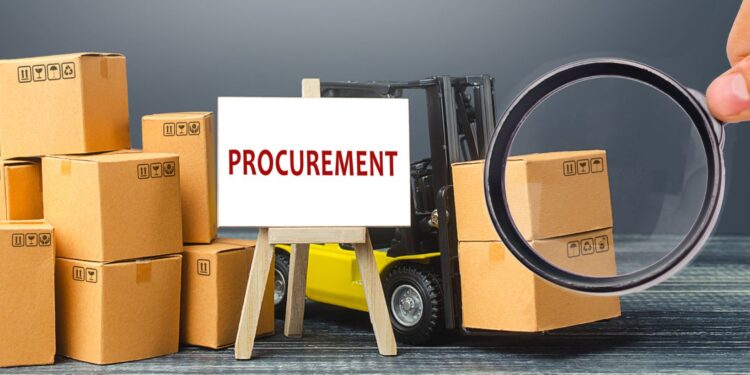Ekap is a term that’s been buzzing around in certain industries, particularly within the realm of procurement and supply chain management. It refers to an electronic procurement platform, which is revolutionizing the way organizations handle their purchasing processes. By leveraging the power of digital technology, ekap platforms enable businesses to streamline their operations, foster transparency, and achieve cost savings.
EKap
Definition of eKap
eKap is an electronic procurement platform designed to streamline and automate the purchasing process for businesses and government agencies. At its core, it’s a digital system that allows users to manage tenders, bids, and contracts within a secure online environment. By digitizing procurement activities, eKap facilitates more efficient transactions between buyers and suppliers.
- Electronic Tendering: Users can publish tender notices and receive bids electronically.
- Supplier Management: The platform maintains a database of supplier information for easy access.
- Contract Administration: It enables tracking and management of contracts post-award.
This system plays a critical role in ensuring transparency in procurement processes while also aiming to reduce administrative costs. A typical feature set includes tools for bid evaluation, electronic document management, and communication features that keep all stakeholders informed throughout the procurement lifecycle.
Purpose of eKap
The main objective behind the implementation of eKap is to enhance the efficiency of public spending while promoting fair competition among vendors. By moving away from paper-based systems, eKap serves several key purposes:
- Transparency: It provides an auditable trail of all transactions which helps prevent fraud and corruption.
- Accessibility: Suppliers have equal opportunity to participate since information about tenders is widely available.
- Time-Saving: The automated nature speeds up the entire process from tendering to awarding contracts.
- Cost Reduction: It cuts down on material costs associated with traditional bidding processes like printing and mailing documents.
Governments often use platforms like eKap not only to improve their own operational efficiency but also as part of broader efforts towards digital transformation within the public sector. As such systems become standardized practice, they help foster a competitive marketplace where quality services are delivered at better value for taxpayers’ money.
| Key Aspect | Benefit |
| Transparency | Reduces potential for fraud |
| Accessibility | Levels playing field for suppliers |
| Time Efficiency | Shortens procurement cycles |
| Cost Effectiveness | Lowers expenses related to tender processing |
By leveraging technology through platforms like eKap, organizations can optimize their purchasing strategy while adhering strictly to regulatory requirements — making sure every dollar spent is accounted for responsibly.
How Does Ekap Work?
Registration process
Getting started with eKap involves a straightforward registration process. First off, you need to create an account on their platform. Typically, this means entering your basic information such as name, email address, and setting up a secure password. Once you’ve filled out the initial form, you’ll receive a confirmation email to ensure your account’s security. It’s essential to click through this email to activate your account before proceeding.
Next up is providing more detailed personal or business information depending on what type of user you are. If you’re registering as a company, additional details like your business registration number might be required. Some platforms even go the extra mile by asking for professional references or previous transaction history.
- Fill out the online form with personal or business info
- Confirm through an activation link sent via email
- Provide additional documentation if necessary

Verification process
Once registered, verifying your identity is key to maintaining the integrity of eKap’s ecosystem. This step typically involves submitting documents that prove who you say you are—a government-issued ID for individuals or legal paperwork for businesses usually does the trick.
For added security measures, some services conduct background checks or credit assessments; it all depends on the nature and scope of transactions anticipated on their platform.
The verification time can vary:
| Documents Submitted | Average Processing Time |
| Government ID | 24 – 48 hours |
| Business Paperwork | 2 – 5 business days |
During this waiting period, it’s not uncommon for customer service representatives to reach out if they need further clarification—so keeping an eye on communication channels is a good idea!
Using eKap for transactions
Navigating through transactions using eKap after verification is generally user-friendly and intuitive. Users have access to dashboards where they can manage orders or offers and track progress from initiation to completion. Here’s what typically happens in a transaction:
- You locate the product or service required.
- The platform allows negotiation terms directly with providers.
- Payment terms are set – often involving escrow services provided by eKap until delivery confirmation.
- Upon agreement fulfillment, funds get released accordingly.
What makes eKap particularly appealing is its commitment to transparency throughout each transaction phase; users can always know where things stand with real-time updates and support when needed.
Remember that transaction fees may apply:
- Listing fees for sellers
- Transaction percentages based on order value
These costs contribute toward maintaining system integrity and facilitating smooth operations across all activities within the platform’s environment.














